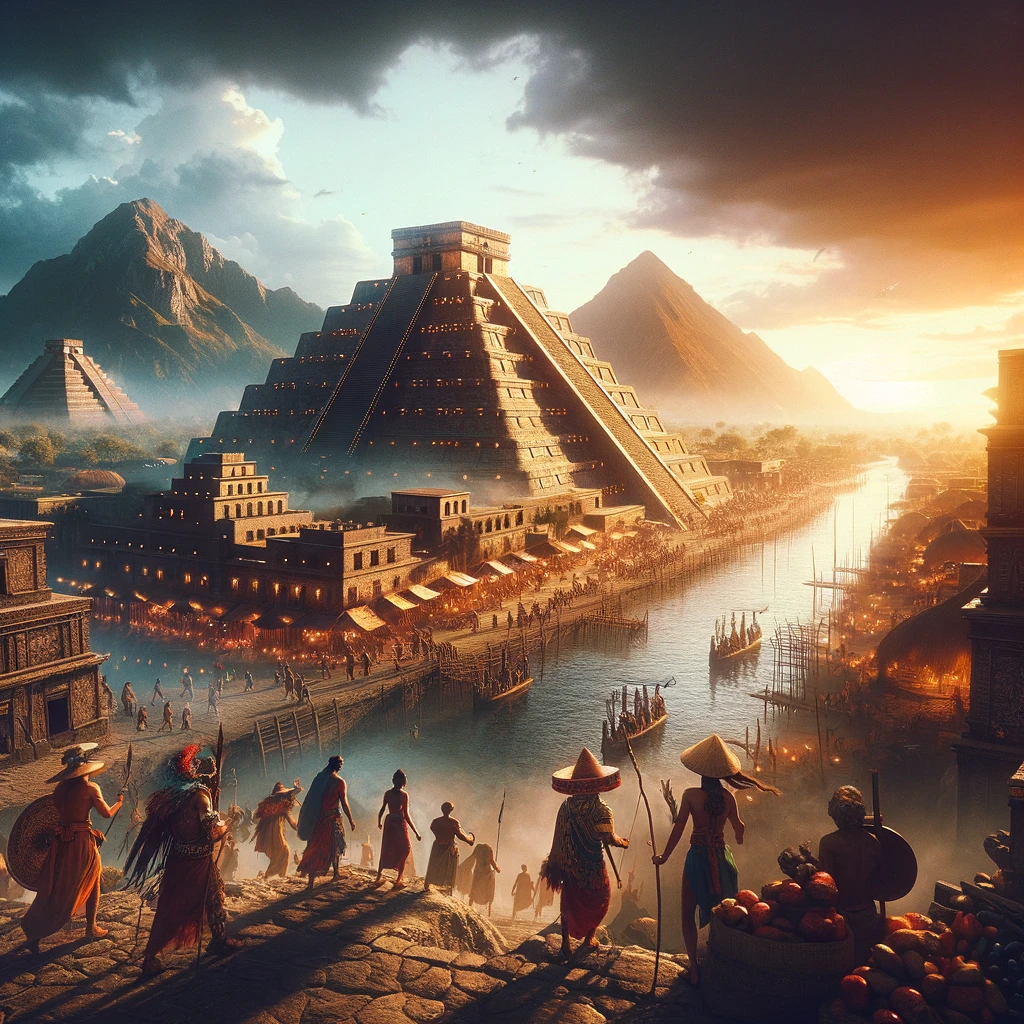Introduction
Alright, folks, buckle up ’cause we’re about to take a trip down memory lane, but this ain’t your grandma’s history lesson. We’re diving headfirst into the vibrant, wild, and downright fascinating world of the Aztec civilization. Think of the Aztecs not just as a chapter from your dusty old history book, but as the rockstars of the ancient world. They were builders, warriors, artists, and believers, all rolled into one.
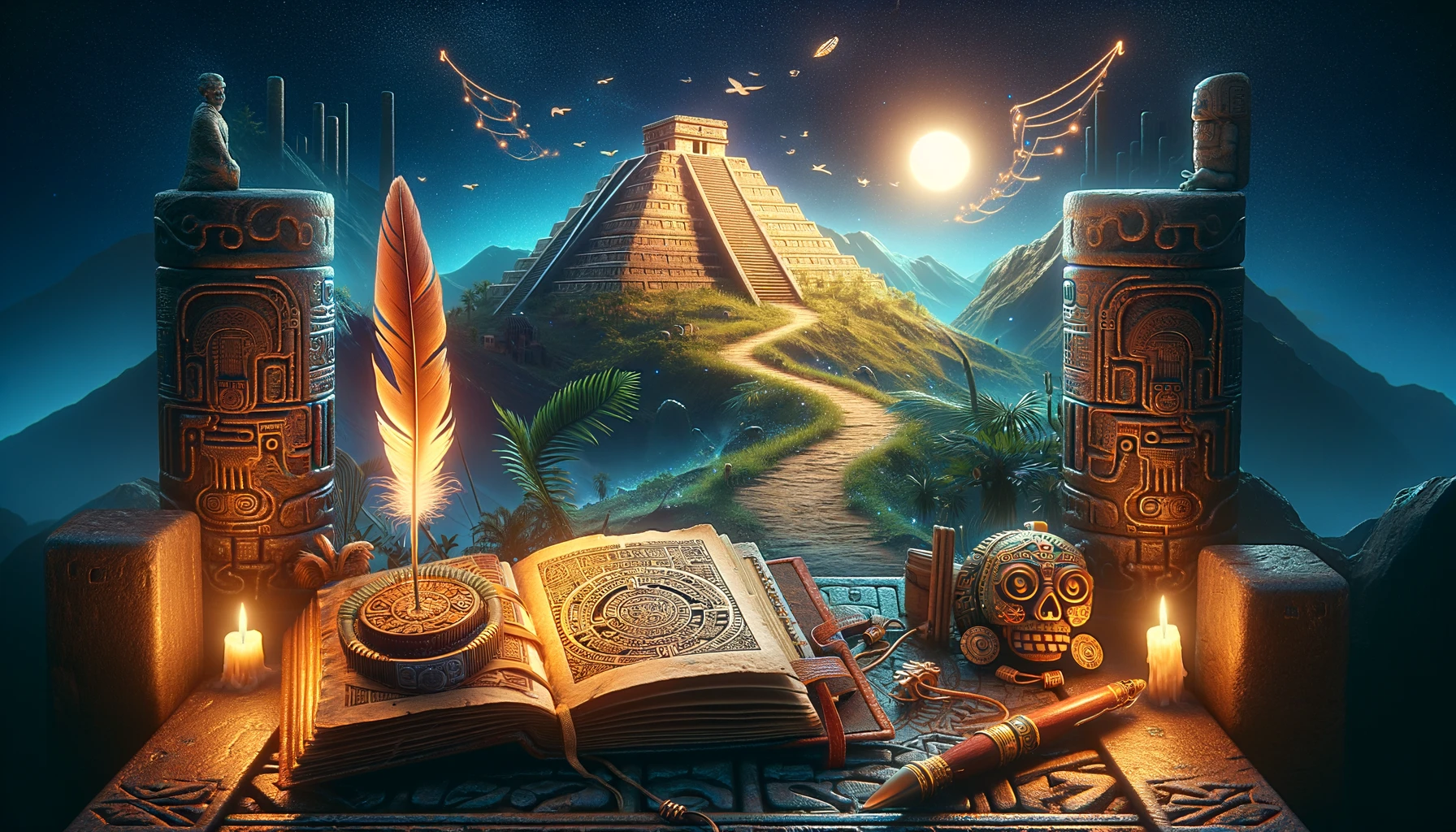
Why should we care about some folks who lived hundreds of years ago, you ask? Oh, honey, because their stories are the stuff of legends and their impacts? Still felt today. By getting to grips with the Aztecs, we’re not just exploring history; we’re unlocking secrets of culture, power, and human nature itself.
Legendary Origin
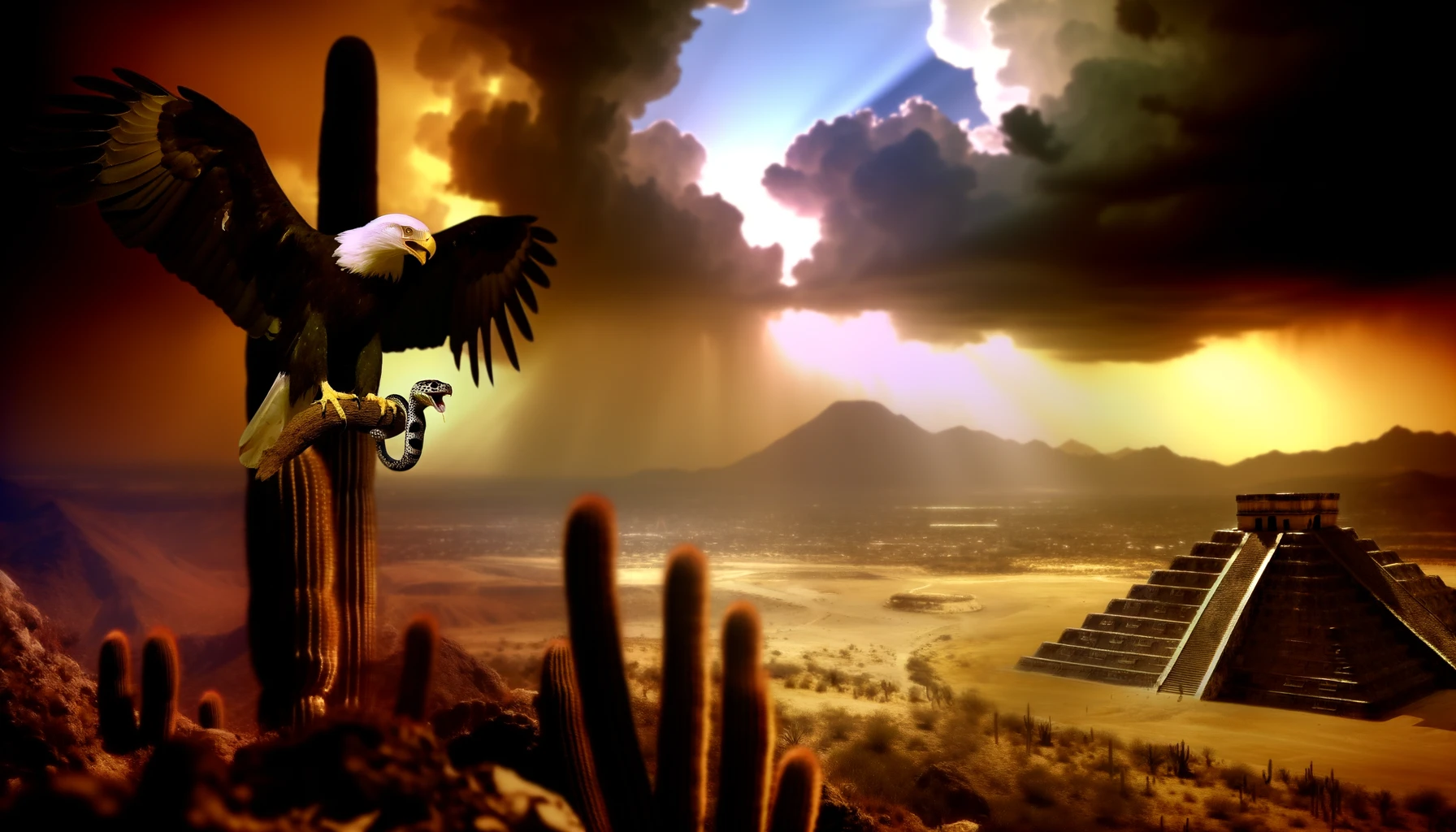
Now, let’s kick things off with a tale that’s better than your favorite soap opera. Imagine you’re part of a tribe with no home to call your own. The gods have your back, but they’re also playing hard to get, sending you on a wild goose chase for a sign. Not just any sign, though – an eagle, perched on a cactus, with a snake in its beak. Sounds like something out of a trippy dream, right?
But bam, one sunny day, there it is! This isn’t just a “finders, keepers” moment; it’s the divine green light to set up shop and start what’s going to be one of the worst, most influential cities of its time – Tenochtitlan. This place was the ancient equivalent of a megacity, complete with pyramids, markets, and canals. And guess what? Modern-day Mexico City sits right on top of its remains. Talk about legacy, huh?
This origin story isn’t just cool trivia; it’s a glimpse into the soul of the Aztec world. Their whole society, their drive, their very existence was tied to what they believed was a cosmic road map laid out by the gods. It set the stage for everything they did, from the buildings they constructed to the wars they waged. Talk about living with purpose!
Absolutely, let’s keep the ball rolling!
Social Structure
So, you think your social scene is complicated? Wait till you hear about the Aztecs. Their society was like a tiered cake – you know, the kind you see at fancy weddings, each layer fancier than the last.
At the top, you had the big cheeses: the emperor and his noble buddies. These guys were living the high life – think palaces, feathered capes, and all the chocolate they could eat (yeah, they were big on chocolate, believe it or not). But it wasn’t all parties and parades; they had to lead armies, run the government, and make sure the gods were kept happy with all sorts of rituals. Busy life, huh?
Then there’s the middle layer: the common folk. These were your farmers, traders, and artisans – the backbone of Aztec society. They weren’t just punching the clock; they were skilled, respected, and essential to keeping the empire running. And hey, they got to join in on the festivals and market days, so it wasn’t all work and no play.
Now, at the bottom, we had the slaves. But hold up, it’s not what you’re thinking. Aztec slavery was a bit different from what we know from other histories. It was more like being in serious debt; you could actually work your way out of it. Plus, slaves could marry, have kids, and even own property. Talk about an employee benefits package, right?
And let’s not forget about the ladies and the kiddos. Women were bossing it in the marketplace, managing homes, and some were even priestesses. Kids, on the other hand, had it strict with schooling and chores – no endless hours of TikTok for them.
Religious Practices
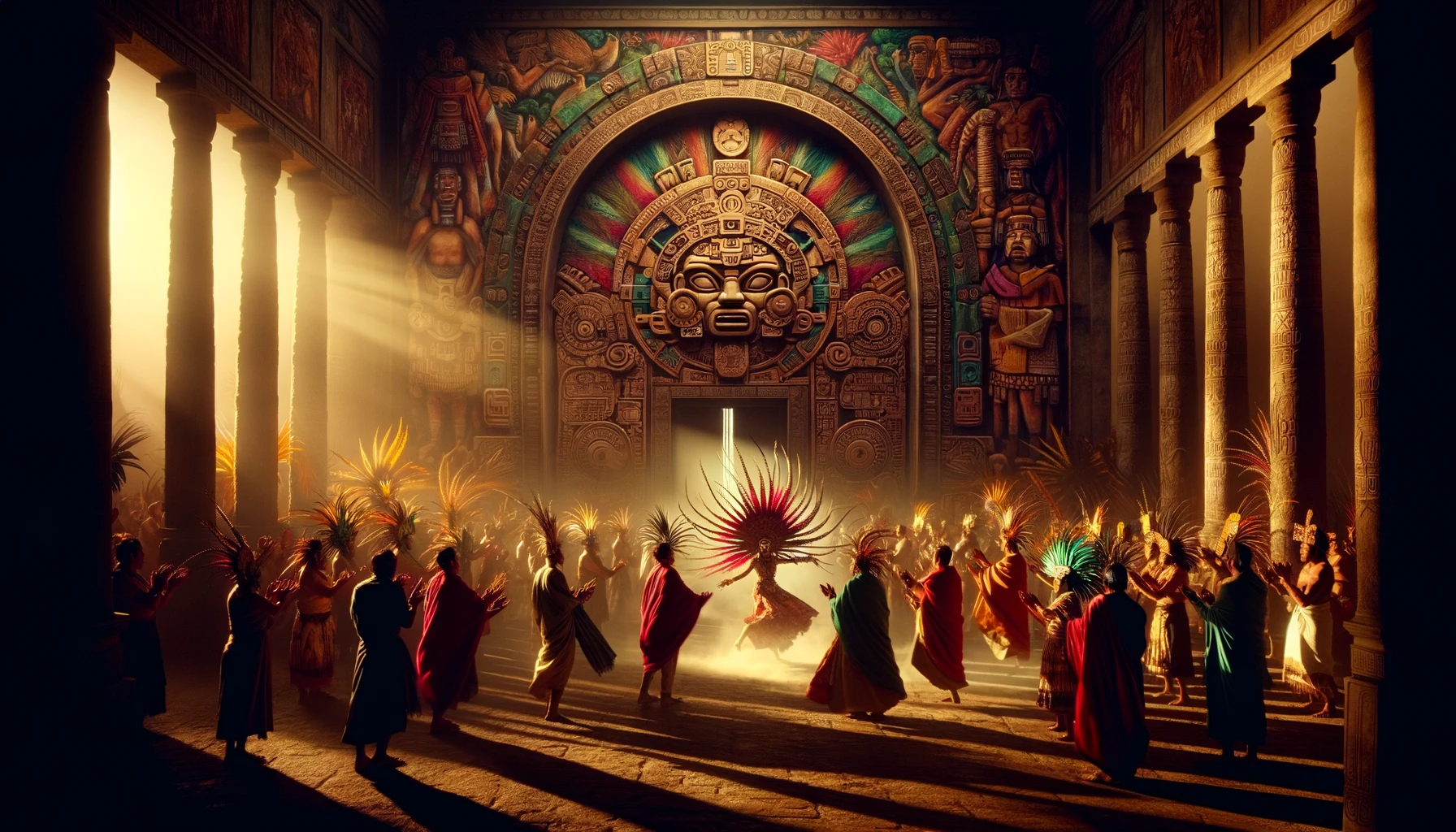
Alright, brace yourselves; we’re diving into the deep end – Aztec religion. These folks took their gods super seriously, like, next-level devotion. They had gods for everything: the sun, rain, corn – you name it, there’s a god for it. And their gods needed attention, like, all the time.
The main event? Human sacrifices. Yeah, I know, it sounds intense, but hear me out. For the Aztecs, this was their way of keeping the universe chugging along. They believed their sacrifices fueled the sun and kept the world from plunging into eternal darkness. Kind of puts forgetting to charge your phone into perspective, huh?
But it wasn’t all doom and gloom. Festivals, music, dancing – it was like a constant cycle of Coachella, but with more feathers and incense. Religion was their way of connecting with the universe, understanding their place in it, and ensuring the cosmic wheels kept turning.
Empire-Building
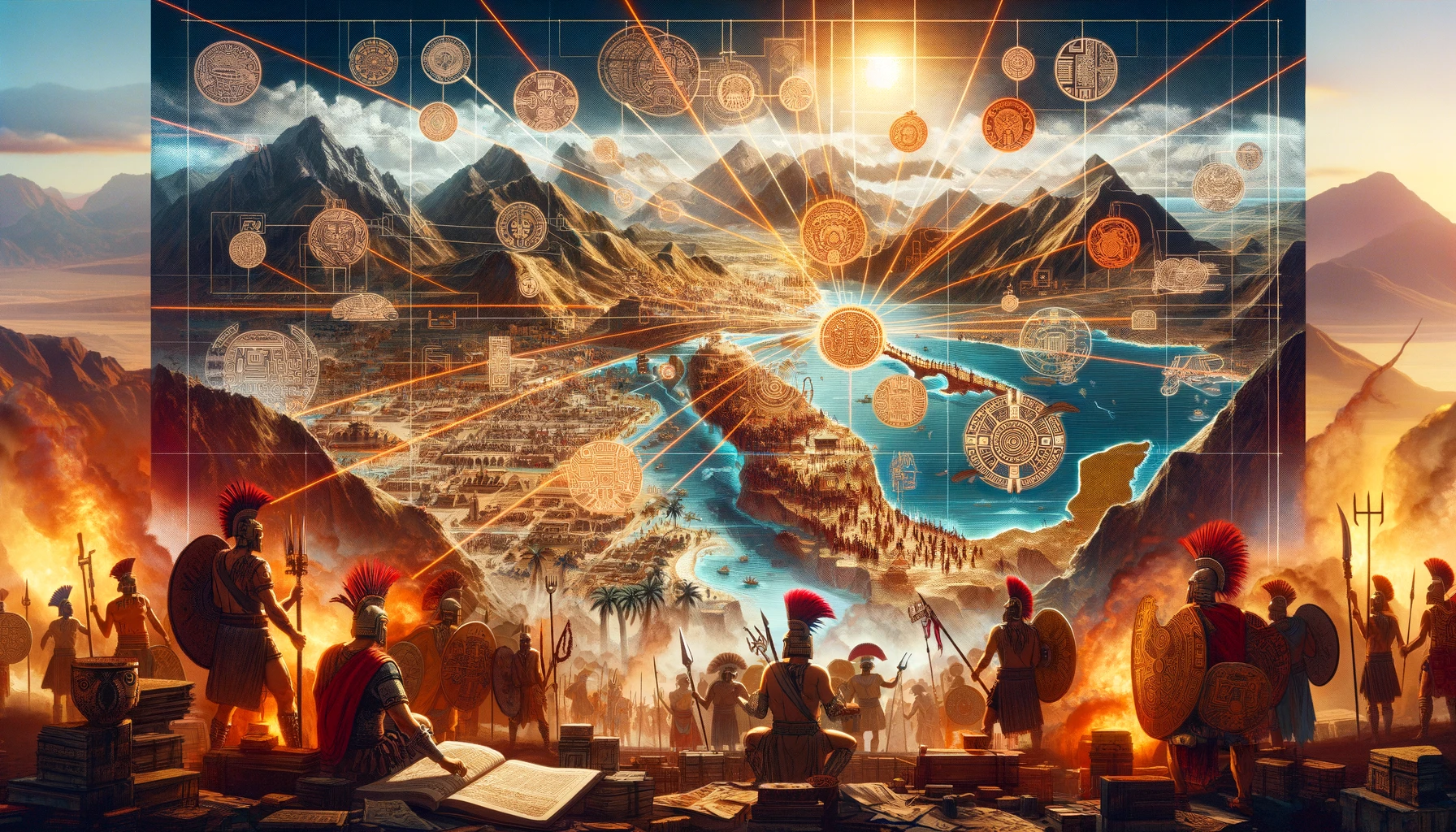
Now, onto the empire-building biz. If the Aztecs were a brand, they’d be the type to dominate the market. They started small, but with a mix of smart alliances, savvy politics, and good old-fashioned muscle, they expanded their turf from coast to coast.
Think of them as the ultimate strategists – playing the long game, making deals, and when necessary, flexing their military muscles. Their tributary system was like a subscription service, where conquered cities had to pay up with goods like cotton, cocoa beans, and, yes, even rubber balls. In return, they got Aztec protection and the privilege of being part of the in-crowd.
But it wasn’t just about taking over; it was about integration, bringing diverse peoples under one big Aztec tent. They were like the melting pot of the ancient world, but with more pyramids and less fast food.
You got it! Let’s roll on into the day-to-day life of the Aztec peeps.
Daily Life
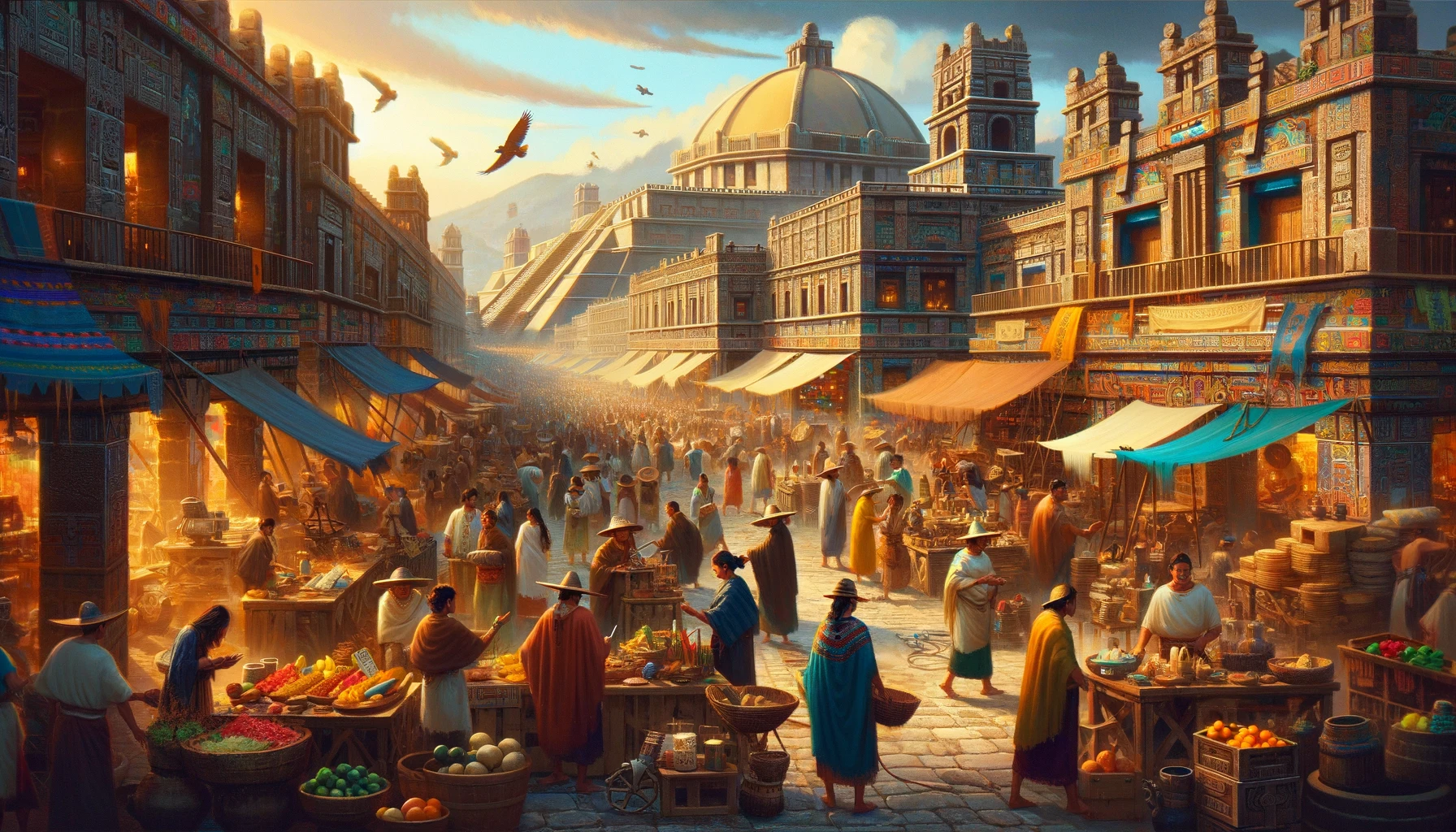
Picture this: you wake up, not to the sound of an alarm clock, but to the bustling sounds of the great city of Tenochtitlan. No snooze buttons here, my friend. The streets are alive with merchants shouting, the scent of street food in the air (tamales, anyone?), and the buzz of the marketplace.
If you’re thinking the Aztecs were just chilling with their cocoa drinks, think again. They were up with the sun, farming, crafting, and trading like their lives depended on it – because, well, they kinda did. But it wasn’t all work; these folks knew how to have a good time, too. Ball games that make the NBA look like child’s play, music, poetry, and festivals that would make your wildest parties look tame.
Kids had it strict – education was key, even for the commoners. And get this, cleanliness? Big deal. They were all about those baths before it was cool, and they even had saunas. Talk about ancient spa days!
Economy and Trade

Now, let’s talk turkey – or, more accurately, let’s talk trade and economy. The Aztecs weren’t just warriors; they were savvy business folks too. Their economy was a well-oiled machine, with agriculture at its heart. Think corn, beans, chili peppers, and squash – the original superfoods, all cultivated with some serious farming know-how.
But it wasn’t just about growing food. They were traders extraordinaires, dealing in everything from exotic feathers to precious stones, and yes, chocolate. The marketplace was the internet of its time – a place to connect, haggle, and hustle. If you had something to sell, you’d find a buyer in the Aztec market, no eBay needed.
And let’s not forget the tribute system – it was like the empire’s subscription service, but instead of Netflix, you got protection and a spot in the Aztec economic network. A pretty sweet deal, unless you were on the losing end.
Legacy of the Aztecs
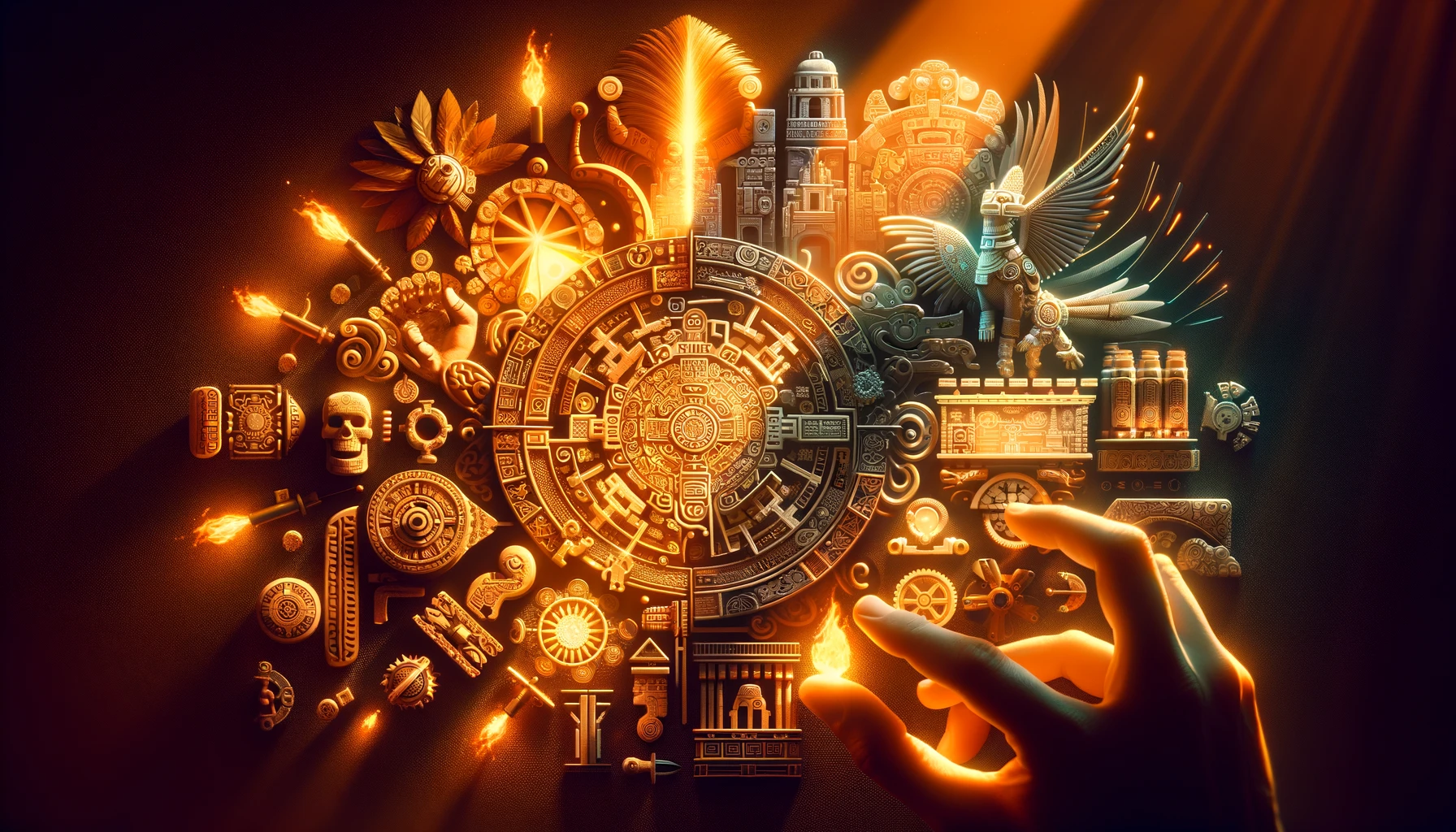
Alright, time to get a bit reflective. What’s the big deal with the Aztecs today? Why should we care about some empire from way back when? Well, my friend, because they’re all around us. From the words we speak (chocolate, anyone?) to the foods we gobble down, the Aztecs left their mark.
Their art, architecture, and innovations are woven into the fabric of Mexican culture, and their influence stretches far beyond. They were master builders, creating a city that dazzled Spanish conquistadors (even if they did end up destroying it, but that’s another story for another time).
But here’s the kicker: it’s not just about what they left behind; it’s about what they teach us – about resilience, ingenuity, and the complexity of human societies. They remind us that history is not just about dates and dead people; it’s alive, shaping our world in ways we might not even realize.
Conclusion
So there you have it, the whirlwind tour of the Aztec civilization. They were more than just sacrificial rituals and stone pyramids; they were a people with a rich culture, a booming economy, and an indomitable spirit.

Understanding the Aztecs isn’t just an academic exercise; it’s a way to understand the human story, our collective past, and maybe, just maybe, a way to understand each other a little better. So the next time you bite into a chocolate bar or add a dash of chili to your meal, give a little nod to the Aztecs. They might just be the most interesting folks you never knew you needed to know.
